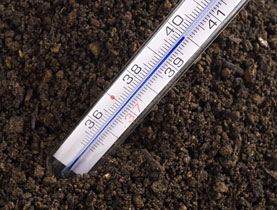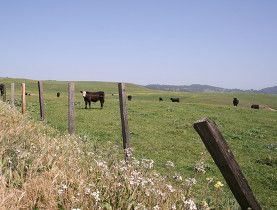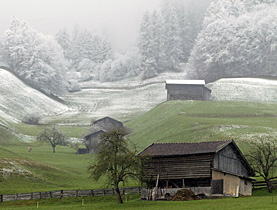Climate data offer clues to Dust Bowl drought

Research by Swiss scientists has moved climatologists closer to understanding the causes behind the Dust Bowl drought that struck the United States in the 1930s.
The Midwest region of the US was devastated by drought and dust storms for nearly ten years, leaving around 400,000 square kilometres of farmland useless and forcing hundreds of thousands of people to leave their homes.
For the first time, a team from the Federal Institute of Technology in Zurich have put together a three-dimensional picture of the atmospheric circulation that preceded it. The team hope the findings will make it possible to predict future droughts more accurately.
“This drought period is very well known, a major climate event and a major event in the history of the United States,” said Stefan Brönnimann, a professor at the Institute for Atmospheric and Climate Science leading the research.
“The climatic side is one side of it and it is not fully understood. It’s one of these opportunities where you can really learn something from the past,” he told swissinfo.ch.
Scientists have been studying the Dust Bowl for decades but have not clearly established the mechanisms behind such an extensive period of drought, as little information has been available on the large-scale movement of air.
Abnormal climate
In the Swiss study researchers digitalised historic wind and temperature readings taken from balloons and aircraft and used them to reconstruct air circulation at an altitude of up to 15km.
With the new data they were able to show that a specific wind flow, dubbed the Great Plains Low-Level Jet, was shallower at the time of the Dust Bowl than had been believed and did not extend as far north as usual. The air current usually carries moist air from the tropical Atlantic far into the region.
The study concludes that a change to the wind flow was caused by a high-pressure system that built up over the Great Plains and was associated with an abnormal upper air flow extending from the Pacific across North America to the Atlantic.
The study also confirmed other scientific thinking that the low-level jet was weaker than normal at the time of the drought.
Models reviewed
“It is these kinds of details that so far no one has been able to look at because there was no information on this low-level jet,” said Brönnimann.
His team is the first to analyse the historic climate data, which is still in the process of being digitalised by the US Climate Database Modernization Program. Climatologists can use their findings when developing models to chart and predict weather, he notes.
“In the past few years there have been severe drought conditions in this region and more to the southwest,” said Brönnimann.
“The question is always how well can we forecast these droughts? Will we be able to forecast such droughts a few months ahead?
“Or if we can’t do that, can we at least say on a decadal scale that we will have more or less of such droughts, more or less frequently in the future?”
Jessica Dacey, swissinfo.ch
A series of severe dust storms hit the Midwest of the United States between 1930 and 1940 causing ecological and agricultural destruction.
Serious drought was coupled with decades of farming without crop rotation, which killed the natural grasses that normally would have trapped moisture and kept the soil in place.
The soil then turned to dust and blew away in immense dust storms. Around 400,000 square kilometres of farmland was affected and hundreds of thousands of people were forced to relocate.
Their plight was the inspiration for the book Of Mice and Men, by John Steinbeck. The region affected covered Texas, Oklahoma and parts of New Mexico, Colorado and Kansas.

In compliance with the JTI standards
More: SWI swissinfo.ch certified by the Journalism Trust Initiative




You can find an overview of ongoing debates with our journalists here. Please join us!
If you want to start a conversation about a topic raised in this article or want to report factual errors, email us at english@swissinfo.ch.